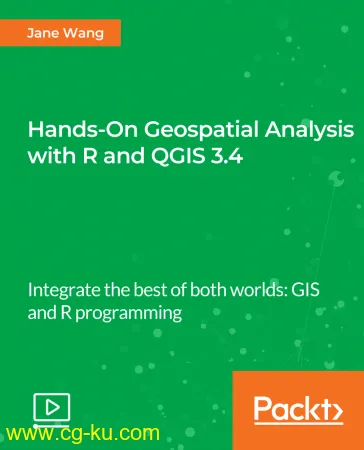$125 | Duration: 2h 11m | Video: h264, 1920x1080 | Audio: AAC, 48kHz, 2 Ch | 799 MB
Genre: eLearning | Language: English | January 31, 2019
Create professional and interactive geospatial and cartographic projects using an advanced free and open-source technology
Video Description
Integrating geospatial data science and traditional cartographic methods is in demand for modern geospatial analysts. In an age of flourishing data products, having a working proficiency with QGIS and R is an added advantage to every analyst.
This course introduces you to the full workflow, ranging from acquiring data, data wrangling, and analysis to outputting and publishing visualization products. We touch on a variety of datasets (including remote-sensing data and techniques) and incorporate machine learning in QGIS analytical steps. We further investigate geospatial analysis using the most up-to-date R packages, such as ggplot2, raster, sf, Leaflet, and Shiny.
By the end of the course, you will be able to produce interactive maps and professional cartographic products, deploy them as a Shiny application, and critique a variety of end-results.
The code bundle for this video course is available at -
Style and Approach
A step-by-step guide using realistic examples and illustrative slides to help you achieve a full workflow.
Table of Contents
INTRODUCTION TO SPATIAL DATA AND OPERATING ENVIRONMENT
DATA PREPARATION AND BASIC PLOTTING
GEOSPATIAL PROCESSING WITH TIDYVERSE AND SF PACKAGE
GEOSPATIAL PROCESSING WITH RASTER PACKAGE AND MACHINE LEARNING
VISUALIZATION AND APPLICATION DEPLOYMENT
EXTENDING BEYOND THE MAP
What You Will Learn
Develop a Shiny application for geospatial data processing and visualizations using R and QGIS 3.4.
Implement an efficient and reproducible workflow for geospatial analysis.
Create interactive and professional mapping products and publish them on open applications.
Conduct advanced geospatial analyses that address practical issues such as land cover using machine algorithms.
Use modern and novel techniques to code with best practices.
Utilize skills to serve a wide range of groups, including governmental organizations, Academia, consulting firms, and natural-resource industries.
Critique a variety of geospatial data products and optimize your geospatial abilities to communicate your findings effectively
Authors
Jane Wang
Jane Wang is a GIS Developer and has a Masters Degree in Geospatial Sciences with experiences in research, teaching, data analysis, and visualizations. She has 6 years' academic and 3 years' professional experience working with geospatial products and communicating scientific information in appealing visual outputs using R, GIS, Python, and Adobe Suite. She has been given awards for her creative and novel geospatial work in international conferences and is also an active member of the R community. She has actively communicated with and taught a wide-ranging audience.


发布日期: 2019-02-02